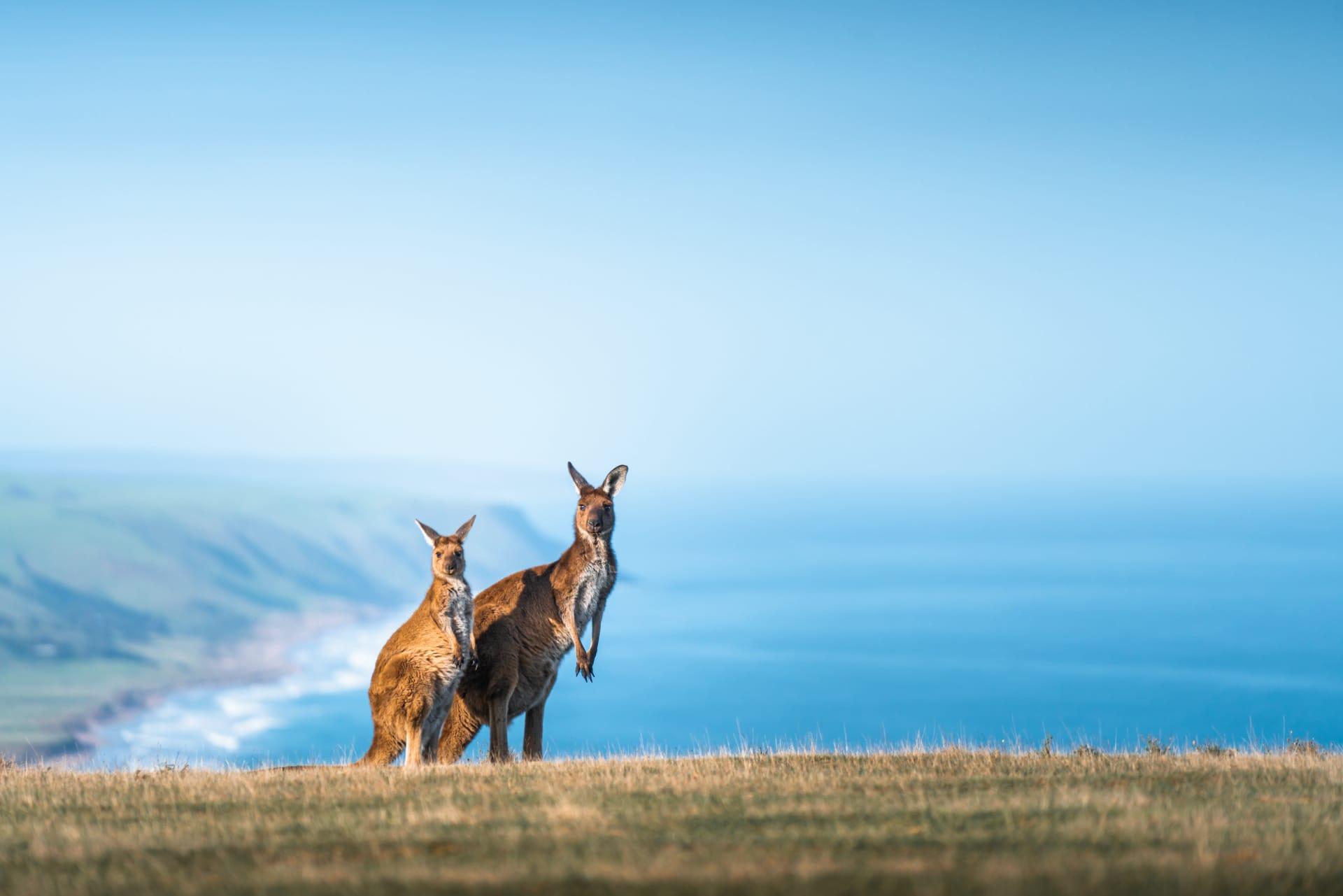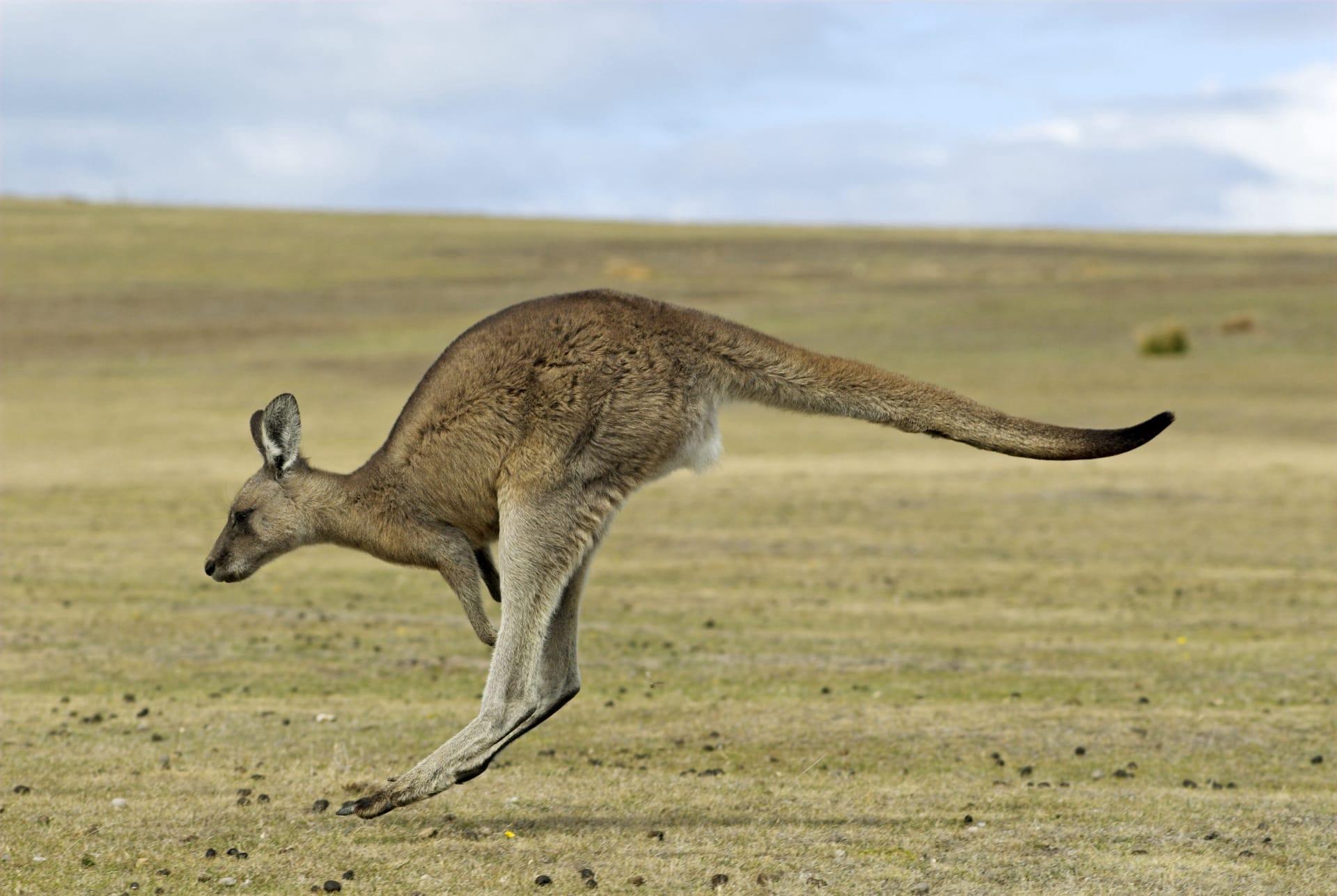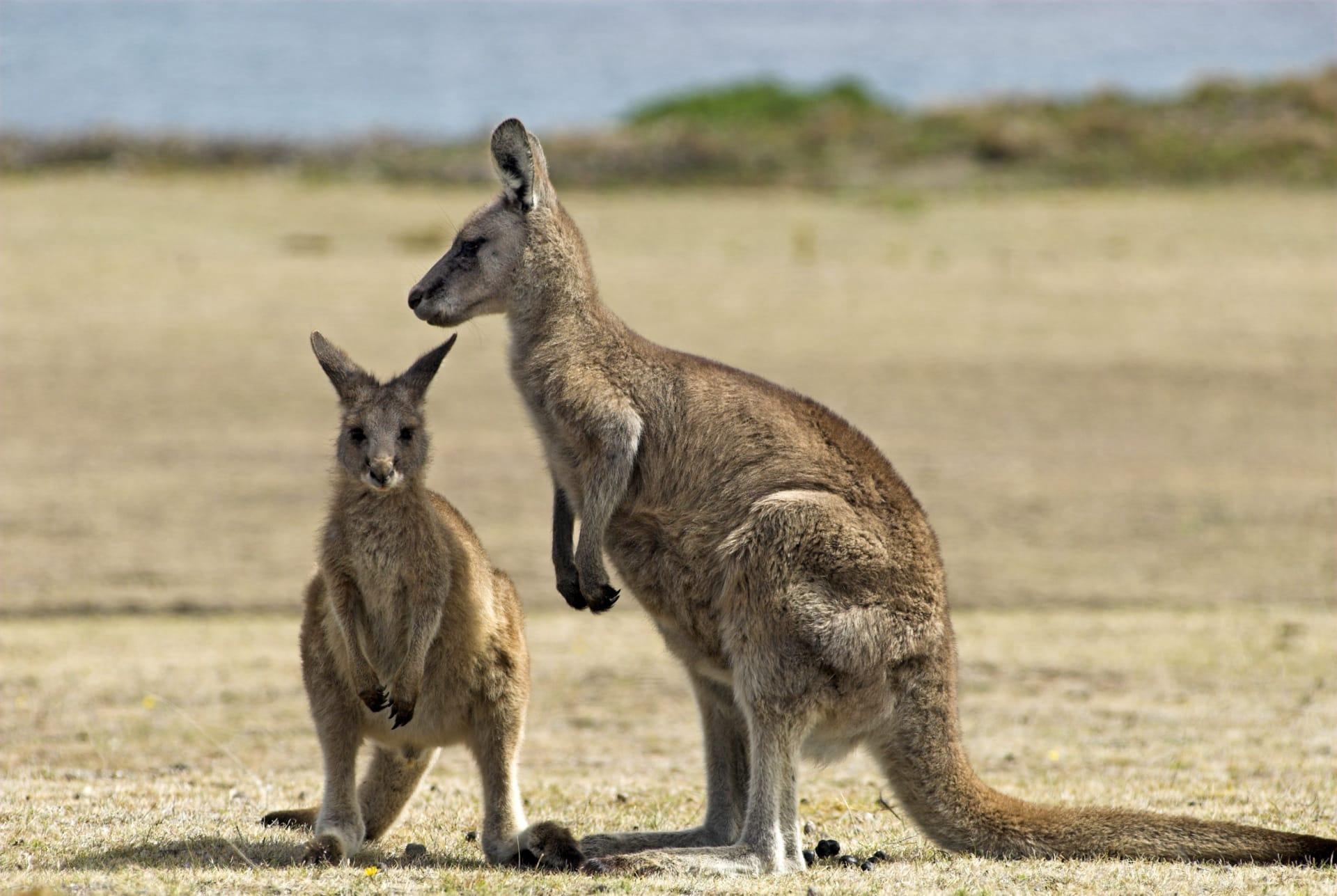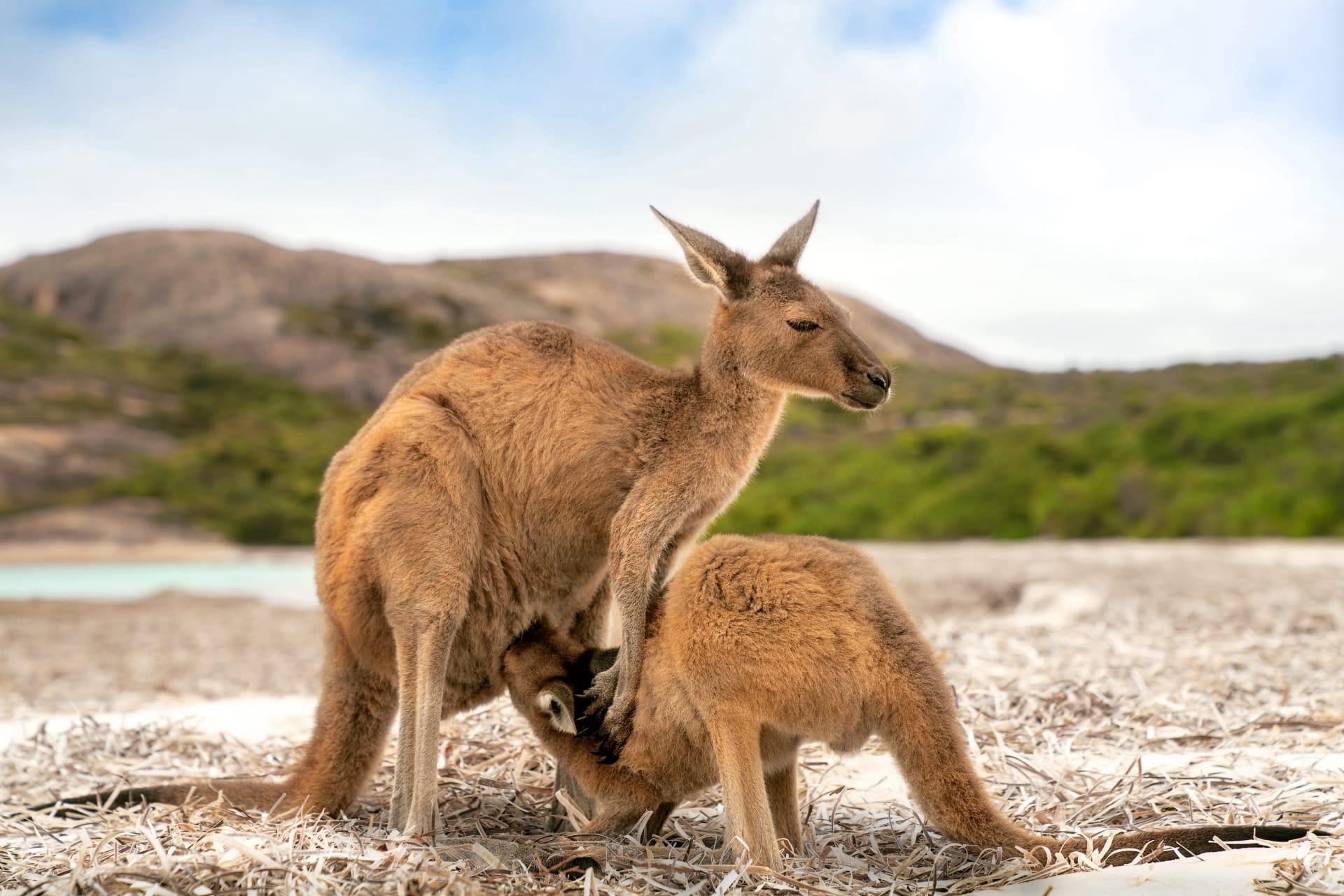Kangaroo Characteristics
- Home /
- Mini Encyclopedia /
- Animal /
- Kangaroo Characteristics
1
Kangaroos, iconic marsupials native to Australia, exhibit fascinating physiological features. An adult kangaroo's size varies significantly among species, with the Red Kangaroo, the largest, standing up to 6 feet tall and weighing up to 90 kilograms. Smaller species, like the Wallaroo, might only reach 1.5 meters in height and weigh around 22 kilograms. Kangaroos have a lifespan ranging between 6 to 22 years, depending on species and environmental conditions. Their robust hind legs, large feet, and strong tails are integral to their unique mode of locomotion, contributing to their ability to cover ground efficiently.
The most distinctive organ of a kangaroo is its pouch, a hallmark of marsupials. This pouch serves a critical role in the reproductive process. Female kangaroos give birth to underdeveloped offspring, known as joeys, which immediately climb into the pouch for further development. Inside, the joey attaches to one of the four teats which swells to fit in its mouth, securing the infant as it continues to grow. This pouch is not merely a holding space; it provides safety, warmth, and the necessary nutrients through the mother's milk, essential for the joey's development during its first few months of life.

2
Question: Why do kangaroos hop instead of walk?
Answer: Kangaroos hop as their primary means of locomotion due to the unique structure of their legs and feet. They are physically incapable of moving their hind legs independently of each other on land, making hopping their most efficient way of travel. This mode of movement is energy-efficient, allowing them to cover vast distances without expending excessive energy. Their long, muscular hind legs work like springs, storing and releasing energy with each leap. Kangaroos can reach speeds of over 60 kilometers per hour and leap over 9 meters in a single bound. Furthermore, the hopping mechanism aids in thermoregulation, as increased blood flow during hopping helps dissipate heat through their skin.

3
Kangaroos are known for their unique locomotion, primarily hopping on their powerful hind legs. This movement allows them to reach speeds of up to 60 kilometers per hour and leap distances of up to 9 meters. Their long, muscular tails provide balance and support, acting as a third leg during slower movements. When grazing, kangaroos also use their tail to form a tripod with their legs, aiding in stability. This efficient mode of travel is crucial for kangaroos, especially when covering the vast, open landscapes of Australia.
Kangaroos are herbivores, primarily feeding on grasses and other vegetation. Their diet is low in nutrients, necessitating long hours of grazing. They have chambered stomachs similar to cows, employing microbial fermentation to break down their fibrous diet. This process makes digestion more efficient, extracting maximum nutrients. Kangaroos also exhibit crepuscular behavior, feeding mainly during dawn and dusk when temperatures are cooler, which helps conserve water and energy – vital in the often arid Australian environment.

4
The natural habitat of kangaroos spans across the diverse landscapes of Australia, from grasslands and woodlands to savannas. They are highly adaptable and can be found in both arid and fertile regions. Kangaroos' need for open space to hop and abundant grass for grazing dictates their preference for flat, open areas. However, they are also found in forests where such conditions exist. Water availability significantly influences their distribution, as they need to drink regularly despite their ability to conserve water efficiently.
Reproduction in kangaroos is noteworthy for its efficiency and adaptability. Female kangaroos possess the remarkable ability to delay the development of an embryo until environmental conditions are favorable. Once a joey is born and moves to the pouch, the female can become pregnant again, but the development of the new embryo pauses if the existing joey is still in the pouch. This reproductive strategy, called embryonic diapause, ensures the survival of the species in challenging environments. Joeys typically spend 4 to 6 months in the pouch before starting to explore the outside world, though they continue to nurse for up to a year.

5
Book: "Kangaroo: Portrait of an Extraordinary Marsupial" by Australian author Stephen Jackson, published in 2011, delves into the biology, behavior, and history of kangaroos. Jackson's comprehensive guide provides insights into the various species of kangaroos, their environmental adaptations, and their role in Australian ecosystems. The book also explores the relationship between kangaroos and humans, highlighting conservation efforts and the cultural significance of this iconic animal.
Book: "The Kangaroo" by John Calaby, a renowned Australian biologist, published in 1983, offers an in-depth exploration of kangaroo biology and ecology. Calaby's work is a meticulous study of the various kangaroo species, their reproductive strategies, feeding habits, and social structures. The book stands out for its detailed analysis of kangaroo behavior in the wild, contributing significantly to the understanding of these unique marsupials.